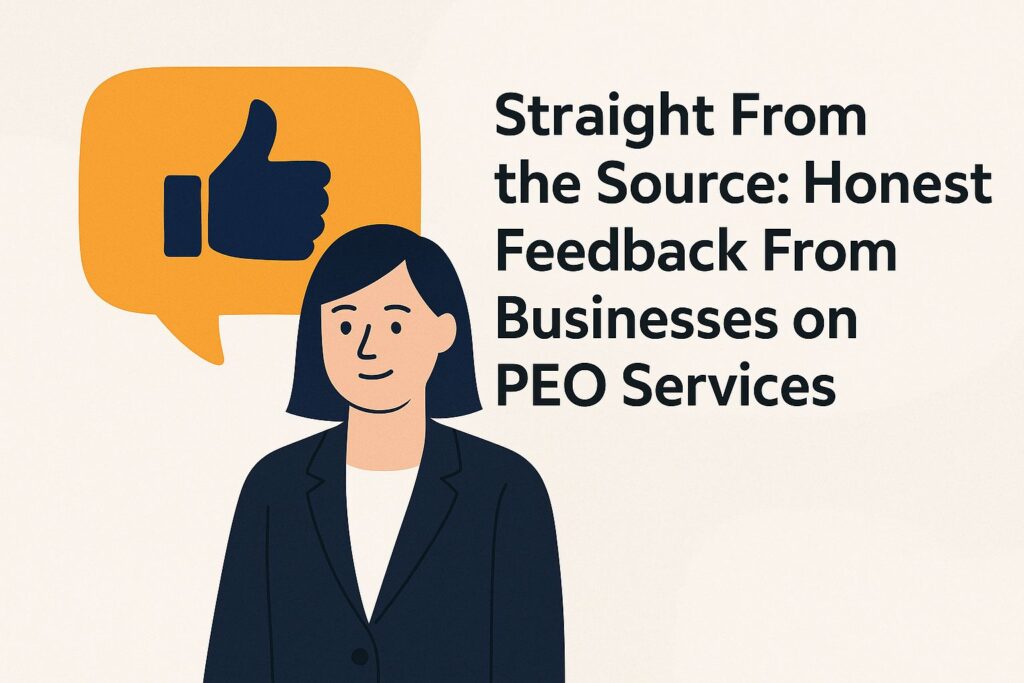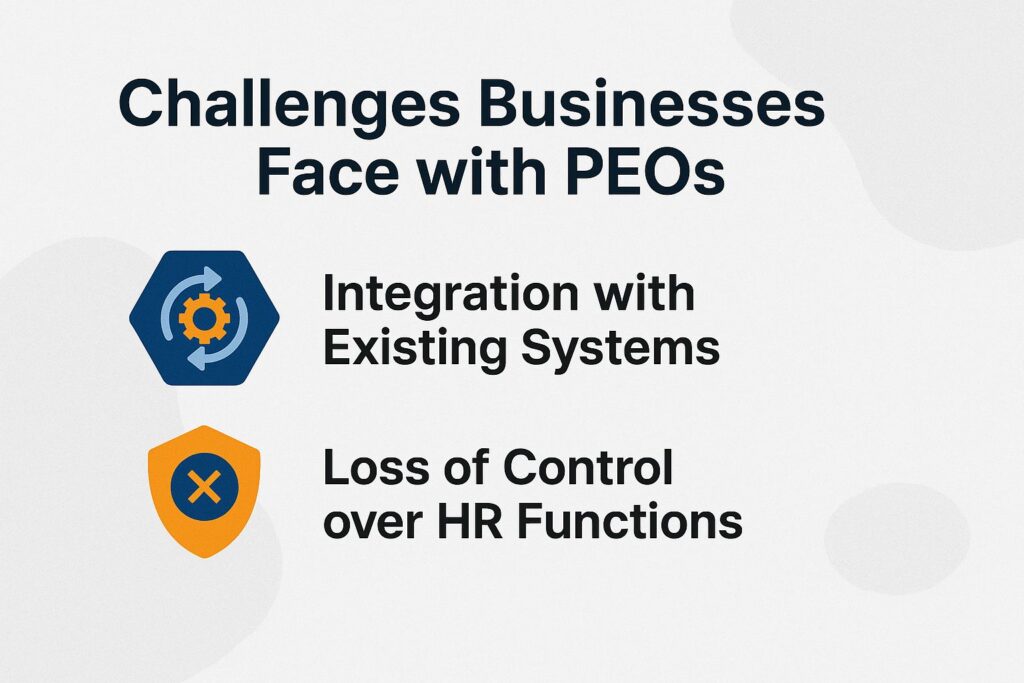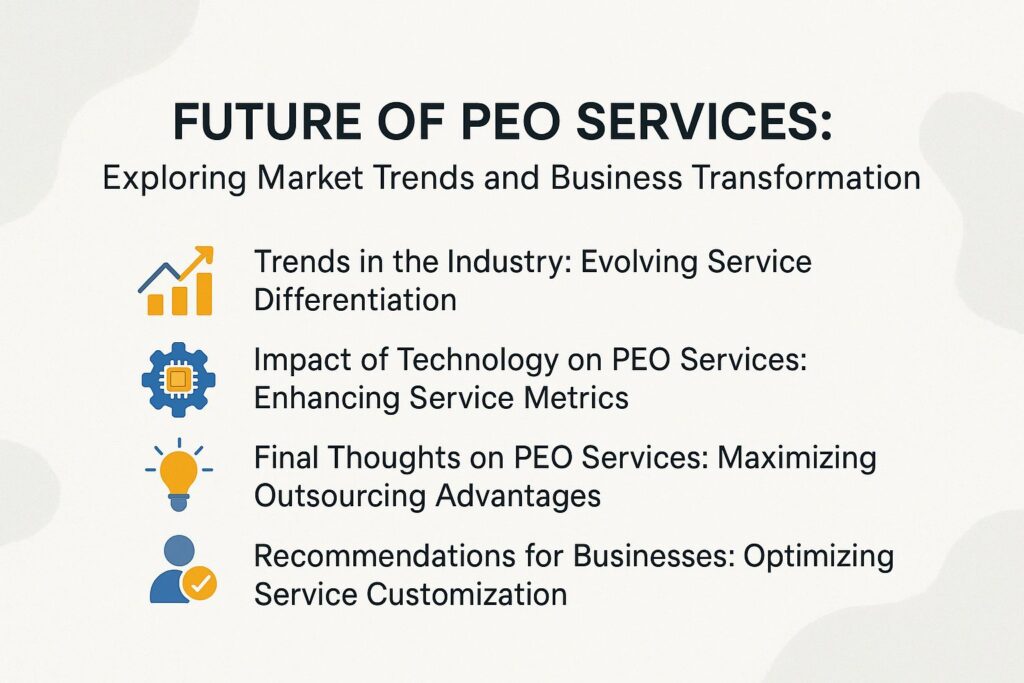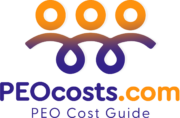
Straight From the Source: Honest Feedback From Businesses on PEO Services
Want to change how your business works? Learning about PEO services could make a big difference. These Professional Employer Organizations offer cost reductions, HR knowledge, and strong compliance help, but there are also some difficulties. You’ll find genuine feedback from businesses dealing with this environment, showing both successes and challenges. Looking for clear information to help you decide on PEOs? Let’s look at what companies are directly saying.
Definition of PEO
A PEO is a setup where businesses share responsibilities like payroll, employee benefits, and help with following legal rules, making the HR process easier.
Through a PEO, a small business can access a wider range of employee benefits and employee leasing options that they might not afford independently. For instance, by joining a PEO, a company with ten employees gains access to health insurance plans that are typically available to larger organizations.
PEOs often provide tools like payroll processing systems and HR technology support, allowing companies to focus on core business activities. This partnership lowers paperwork tasks and improves employee happiness with better benefits and training options.
Importance of PEO for Businesses
PEOs are important for businesses as they reduce day-to-day tasks, letting companies concentrate on business growth and interacting with employees.
By outsourcing HR functions, businesses can reduce their workload by up to 40%, leading to significant gains in business efficiency.
For instance, a tech startup might use a PEO to handle payroll, benefits administration, and compliance issues, freeing their team to innovate and expand their product line with improved employee engagement.
This lets them focus on their main goals without being sidetracked by HR details. Working with a PEO enables startups to access better employee benefits, often improving talent acquisition and retention rates.
Benefits of PEO Services

Using PEO services can provide major advantages, leading to better performance improvement, access to professional HR advice, and managing compliance risks more effectively through risk management. If interested, those looking to understand cost-related benefits may explore how PEO services can help lower health insurance costs for employees.
Cost Savings
Businesses can cut HR costs by 20-30% by working with PEOs, especially through group buying of employee benefits and efficient payroll systems, showcasing cost effectiveness.
Using a PEO helps companies lower administrative costs because these organizations handle compliance and regulatory duties effectively, emphasizing HR compliance.
For example, a small manufacturing firm, Smith & Co., saved $50,000 annually by outsourcing their HR functions to a PEO. This partnership allowed them to access lower health insurance rates due to the PEO’s large pool of clients, thus providing better benefits to their employees while also freeing up internal resources for core business activities.
As a result, their productivity increased significantly.
Access to HR Expertise
PEOs connect businesses with experienced HR experts to improve service quality, bring in new methods, and follow industry rules.
These professionals offer important services such as processing payroll, managing employee benefits, and checking compliance, improving client satisfaction.
A small tech startup partnered with a PEO to simplify payroll management, reducing processing time by 50% and ensuring correct tax handling. A client stated, “Since working with our PEO, our compliance headaches are gone, and we can focus on growth instead of paperwork.”
By using these services, businesses save time and reduce risks linked to HR mistakes.
Compliance and Risk Management
PEOs significantly reduce compliance risks by keeping businesses informed of changing regulations, which helps mitigate potential legal issues through strategic risk mitigation.
For example, a PEO can help with tax compliance by handling payroll correctly according to different federal, state, and local tax laws.
They regularly check and teach to follow workplace safety rules. According to a study, businesses working with PEOs experience a 20% reduction in federal tax audits.
Businesses can use HR software to simplify compliance tracking and reporting, which helps them keep up with changes in regulations.
Challenges Businesses Face with PEOs

Even though there are benefits, companies might face difficulties when working with PEOs, especially with merging and managing HR tasks and balancing employer obligations. To understand how different PEOs address these challenges, you can explore our PEO Comparison Guide detailing TriNet, ADP, and Justworks.
Integration with Existing Systems
Integrating PEO services with existing HR systems can be complicated, often leading to data silos and inefficiencies if not managed properly, impacting service efficiency.
To make this integration easier, think about using HR technology like Gusto, which provides smooth payroll integration with PEO services.
By connecting Gusto to your HR system, employee data can be synchronized automatically, preventing duplications.
Another option is BambooHR, which has a strong API that makes it simple to move data between systems.
Train your HR team on these platforms to make the process smooth and reduce mistakes during the changeover. A well-planned integration strategy can save your organization significant time and resources.
Loss of Control over HR Functions
Many businesses fear losing control over critical HR functions when partnering with a PEO, particularly in areas like recruitment and employee relations, affecting employee management.
To deal with these issues and keep operations running smoothly, companies can apply different methods. Establish regular communication with the PEO to maintain transparency on HR practices and decisions.
Use SMART goals-clear, quantifiable, realistic, important, and scheduled-to check how well the PEO is doing its job. Designate an internal liaison to oversee PEO activities, ensuring that company culture remains anchored in the organization’s values.
This forward-thinking method reduces risks of losing control and builds a joint working relationship that matches the goals of both sides.
Real Business Feedback on PEO Services and Vendor Partnerships
Client feedback from actual companies shows different experiences with PEO services, pointing out both good and bad points. To better understand these nuances, one expert opinion suggests that examining the pros and cons of PEO versus HRO services can offer deeper insights into the key differences and benefits each model provides.
Positive Experiences
Many companies report positive outcomes from their PEO partnerships, often citing improved employee satisfaction, operational efficiency, and service excellence.
For instance, Tech Solutions, a mid-sized IT firm, partnered with a PEO and saw a 30% reduction in employee turnover within the first year. They said this was because of better benefits packages and simplified payroll procedures.
Similarly, Creative Designs benefited from increased time savings, spending 20 hours less on HR tasks monthly, allowing them to focus on growth initiatives.
These companies stress the need to partner with a PEO that knows their industry well to get the most benefits suited to their workers’ needs.
Negative Experiences
Conversely, some businesses have shared negative experiences with PEOs, often stemming from poor communication and unmet client expectations.
Common complaints include delays in payroll processing and employee payroll management, leading to employee dissatisfaction. Businesses have reported a lack of responsiveness from PEO representatives, especially during critical issues like compliance inquiries.
For instance, a company might struggle to get timely updates on tax filings, which could result in penalties. Some users have highlighted a disconnect between the PEO’s services and their specific needs, like customized benefits packages.
To handle these issues, PEOs need to focus on clear communication and frequent meetings to stay in line with business goals.
Case Studies
Looking at case studies shows how different businesses have utilized PEO services to achieve success through strategic partnership experience, which aligns with the principles outlined in our analysis of how a PEO protects businesses from potential lawsuits.
Small Business Success Stories
Small businesses like Trade Corp have seen significant improvements in employee retention and satisfaction by partnering with a PEO, illustrating effective workforce management.
For instance, after Trade Corp collaborated with a PEO, employee turnover decreased by 30% within the first year. This partnership enabled them to access complete benefits packages, such as health insurance and retirement plans usually available to bigger companies.
They reported a 25% rise in employee productivity due to better training and development programs provided by the PEO. By outsourcing HR responsibilities, Trade Corp directed more attention to main business functions, leading to a 15% yearly increase in revenue.
Large Enterprise Insights
Big companies like ABC Industries have improved their HR functions and lowered expenses by using full PEO services, demonstrating effective organizational support.
For instance, Trade Corp integrated a PEO to manage payroll and compliance, resulting in a 30% reduction in administrative overhead.
The strategic benefits include alleviating HR burdens, which allows in-house teams to focus on core business activities.
CHI Enterprises saw better employee benefits packages through their PEO, which helped keep more staff.
Information from the industry shows that areas like manufacturing gain a lot from strict adherence to regulations, showing how customized PEO services can help businesses succeed, enhancing business reputation.
Comparing Different PEO Providers: Service Comparison and Competitive Analysis
Picking the right PEO provider is important; judging possible partners based on clear standards helps find a suitable match. For those unsure where to start, our comparison guide on TriNet, ADP, and Justworks offers valuable insights into what different providers offer.
Criteria for Evaluation
Key things to think about when evaluating PEO services include their pricing structure, the services they offer, the quality of their customer support, and their ability to manage compliance.
When assessing PEOs, consider specific performance metrics to gauge their effectiveness.
For instance, analyze service level agreements (SLAs) which outline response times and resolution procedures, reflecting the trust factor. Investigate customer support options by looking for 24/7 availability and multiple contact methods-like phone, chat, and email.
Check the range of services offered; some Professional Employer Organizations may excel in payroll processing, while others might focus on HR compliance or employee benefits. These HR outsourcing solutions can provide significant operational support.
Make sure they follow the current labor laws that apply to your industry, improving compliance and trustworthiness. Following industry standards is important for successfully interacting with stakeholders.
Top PEO Providers Reviewed: Detailed Service Analysis
A review of leading PEO providers, such as ADP TotalSource, Insperity, and TriNet, reveals distinct strengths suitable for various business needs, showcasing service reliability and return on investment.
ADP TotalSource is a great choice for bigger companies because it offers a complete set of HR services and strong payroll options. It typically costs $100 per employee each month, offering important staffing solutions and help with administration.
Insperity provides customized solutions with excellent customer support, which is perfect for small to medium-sized businesses. The cost typically ranges from $120 to $150 per employee each month, reflecting a strong value proposition and operational costs efficiency.
TriNet provides specialized services designed for particular industries, which makes it an excellent option for businesses in sectors such as technology or healthcare. Their plans begin at around $100 per employee, offering strategic business solutions.
Assess your company’s size, industry, and specific needs to choose the right provider, ensuring effective outsourcing strategy and business decisions.
What’s Next for PEO Services: Looking at Market Changes and Business Changes

Recent developments and technology are improving PEO services, enhancing their effectiveness and enabling businesses to adjust and grow their services.
Trends in the Industry: Changes in Service Differentiation
Current trends, such as increased demand for remote work solutions and flexible benefits, are reshaping how PEOs operate and deliver services, focusing on user experience and employee experience.
A recent survey reveals that 83% of organizations are shifting to hybrid work models. This change is causing PEOs to better support their remote employees, which helps improve client relationships and feedback systems.
This involves giving HR help to remote teams and offering online tools to keep employees engaged, making sure services are provided effectively and training is given to employees.
70% of employees now favor flexible benefits, causing PEOs to provide custom health plans and wellness programs. This shift highlights the importance of business practices and service customization.
Using HR technology platforms like Gusto or Zenefits helps PEOs make payroll and benefits management easier. This supports them in managing these needs effectively, enhancing business knowledge, and offering operational help.
Impact of Technology on PEO Services: Enhancing Service Metrics
Technological advancements, including HR automation and data analytics, are revolutionizing PEO services and enhancing client experiences, improving business solutions and outsourcing advantages.
For instance, companies such as ADP use AI tools that help PEOs analyze workforce patterns and make informed decisions, enhancing HR services and business adjustments.
HR technology platforms like Gusto make payroll work easier, ensuring payments are done quickly and correctly. PEOs are using tools like BambooHR to simplify hiring, speeding up the process and enhancing service quality while managing operational costs.
By using these technologies, PEOs improve how they work and provide their clients with services that fit their workforce needs, ensuring high service scalability and market positioning.
Final Thoughts on PEO Services: Maximizing Outsourcing Advantages
Professional Employer Organizations can be useful partners, helping businesses manage difficult HR tasks, but they need a dedicated collaboration, focusing on providing services and involving all parties.
To maximize the benefits of partnering with a PEO, businesses should prioritize clear communication and set defined objectives from the outset, ensuring effective feedback analysis and client relationships.
For instance, identify key areas like payroll processing or employee benefits where the PEO can provide the most value proposition and human resources support.
Regular meetings and feedback mechanisms are important. Tools like Asana or Slack help organize communication, improving how businesses understand and coordinate HR services.
Making sure HR compliance strategies are agreed upon helps both parties understand each other. In the end, an open and forward-thinking relationship can increase HR efficiency and involvement, enhancing business practices and employee experience.
Recommendations for Businesses: Improving Service Customization
To offer better service, understand your customers. Use surveys, feedback, and direct conversations to gather information about their wants and likes.
Use Technology
Introduce technology to help manage customer information and tailor services. Tools like CRM systems can help track customer behavior and preferences.
Train Your Staff
Make sure your employees know how to use the tools and methods for customizing services. Hold regular training sessions to keep everyone updated.
Offer Flexible Options
Provide different service choices to meet the various needs of your customers. This can include various pricing plans, personalized products, or special deals.
Gather Feedback
Frequently ask for feedback to improve your services. Make it simple for customers to share their thoughts through surveys, suggestion boxes, or online reviews.
Monitor and Adjust
Regularly check how well your customization efforts are working. Use the collected information to make necessary changes and keep improving. Remember, the goal is to make your customers feel valued and recognized. By focusing on their needs and preferences, you can increase satisfaction and loyalty.
Businesses need to carefully examine their specific requirements, review various PEO choices, and find reliable partnerships to succeed, ensuring effective service delivery and outsourcing strategy.
- Start by figuring out the exact services you need, like handling payroll, managing HR compliance, or organizing employee benefits, ensuring service reliability and business solutions.
- Shortlist outsourcing firms based on these needs, and request case studies or customer testimonials to gauge their effectiveness in similar situations, ensuring service metrics and value proposition.
- Make sure their HR technology works well with your existing systems, making administrative work easier and better supporting operations.
- Set up clear ways to communicate and create service agreements to support a productive partnership, making client relationships better and analyzing feedback.
- Monthly meetings can help solve any current problems quickly, contributing to efficient feedback mechanisms and HR challenges solutions.
Written by Carol Sanders
Harvard University graduate with a degree in psychology and human resources.
Owner of a PEO consulting firm in Massachusetts and contributing writer for PEO Costs.


